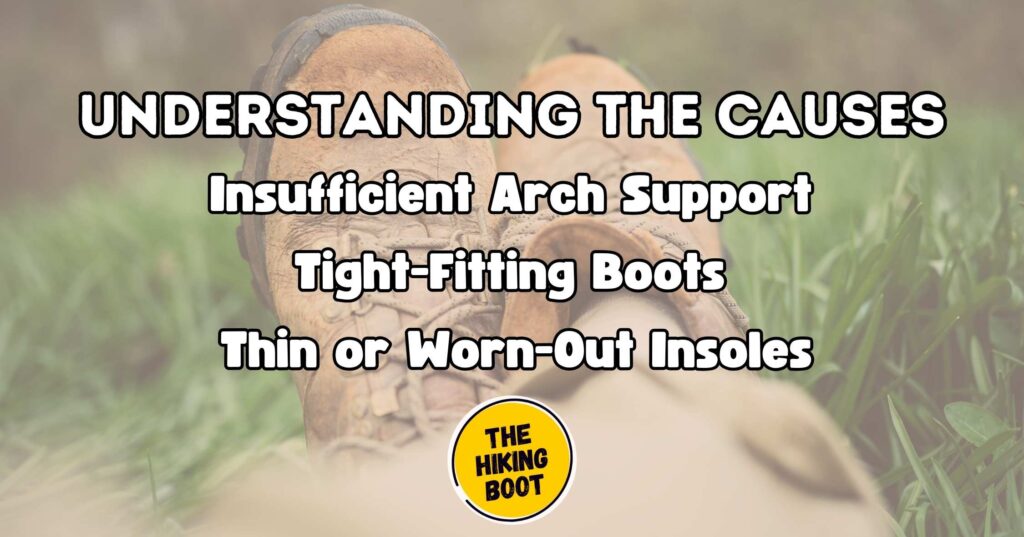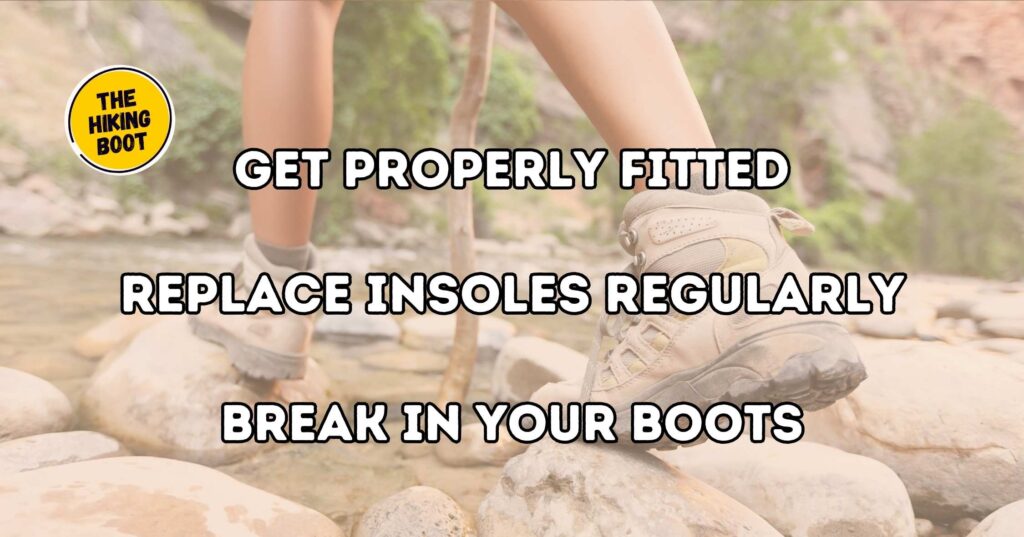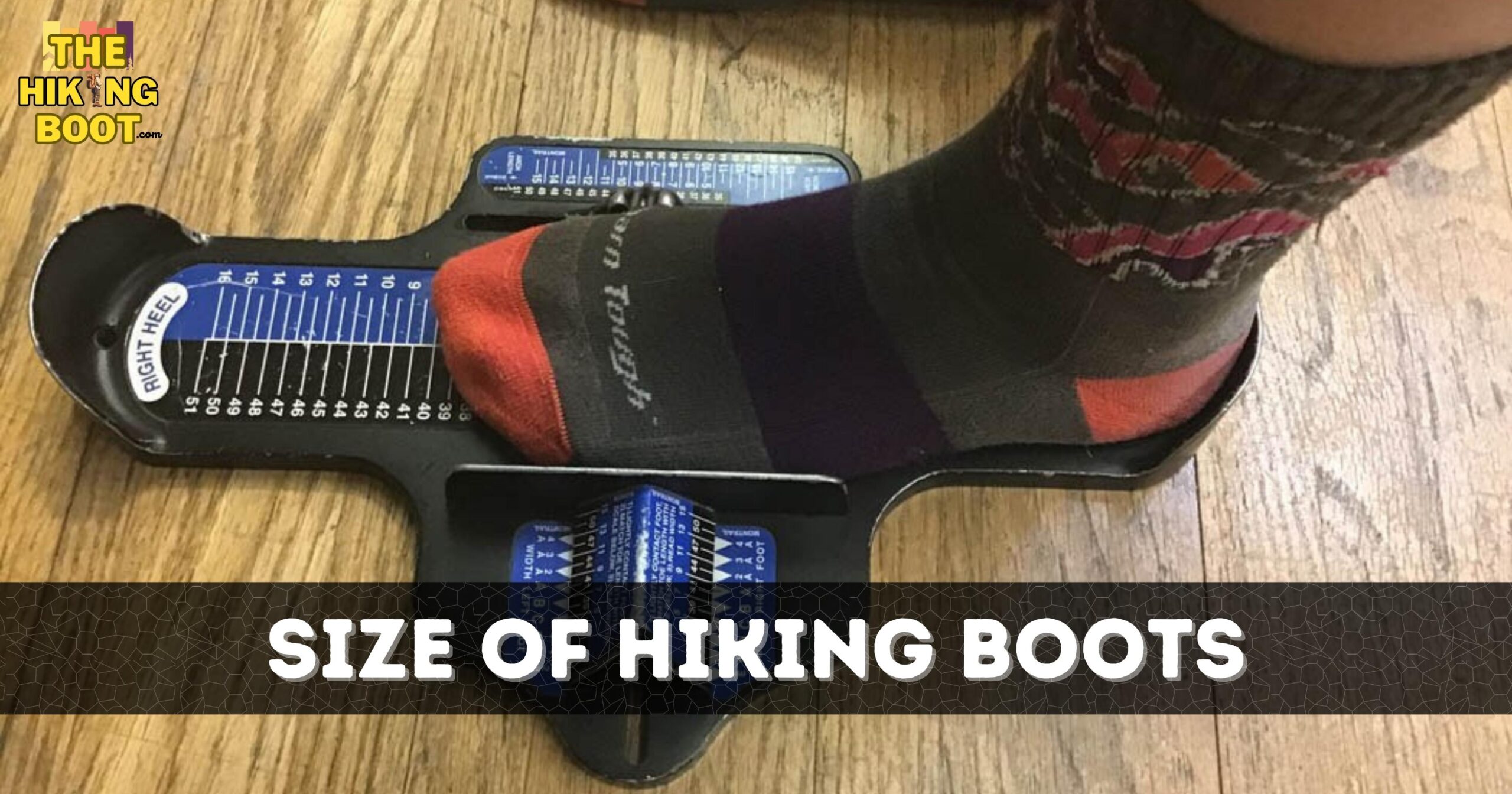Every hiker and have experienced pain in the ball of your feet during a lengthy hike? If you have, you’re not alone. In fact, ball of foot pain is a common issue for hikers, trekkers, climbers, and those wearing hiking boots all around the world. The condition can range from mild to severe, like if you are walking on needles or glass shards, but there are ways to prevent and manage this discomfort.
“Morton’s Neuroma, a prevalent form of ball of foot discomfort, arises when the nerve bundle between the third and fourth toes swells, leading to localized pain. This discomfort can intensify, especially during hiking, due to the added pressure exerted by shoes or boots.”
Getting the right fit is the first step to avoiding pain in the ball of your feet while hiking. Ensure that your boots are neither too tight nor too loose, as both can result in friction and subsequent pain. Wearing proper hiking socks can also reduce the risk of foot pain.
These socks provide cushioning and absorb sweat, reducing the likelihood of blisters. We will discuss some of the causes of the ball of foot pain and how properly fitting shoes and implementing practical techniques can help avoid these annoying incidents while out on your next adventures.

Understanding the Causes
The primary causes of ball of foot pain while hiking often revolve around improper footwear and lack of adequate foot care.
Factors such as ill-fitted boots, prolonged pressure due to demanding terrains, or a lack of cushioning can lead to discomfort and pain in this area over time.
Insufficient Arch Support
Insufficient arch support in hiking boots can dramatically contribute to the ball of foot pain.
The arch plays a crucial role in distributing pressure evenly across the foot while walking or hiking.
When the boots lack adequate support for this natural structure, the feet tend to roll inward excessively, a condition known as overpronation.
This shifts the weight disproportionately to the ball of the foot, causing strain and discomfort.
Choosing boots with the proper arch support can alleviate this issue, helping to maintain the foot’s natural alignment and providing a comfortable cushion that absorbs shock from challenging terrains.
Tight-Fitting Boots
Tight-fitting boots are another culprit behind ball-of-foot pain while hiking.
When boots are too tight, they squeeze the foot, causing pressure on the metatarsal area, leading to pain and discomfort.
Furthermore, they can constrict natural foot movement and circulation, leading to numbness or even injuries.
Tight boots can also create hotspots, which can turn into painful blisters if left unchecked.
Therefore, ensuring a snug but not overly tight fit is crucial when selecting hiking boots.
A good tip is to try on boots in the afternoon when feet are at their most significant, and always wear your typical hiking socks while fitting.
Thin or Worn-Out Insoles
Thin or worn-out insoles are vital contributors to ball-of-foot pain during hikes.
Over time, the insoles in our boots naturally wear down and lose their ability to provide ample cushioning and shock absorption.
This can lead to increased pressure and strain on the ball of the foot, especially during long hikes on challenging terrains.
Insoles also contribute to proper foot alignment, and worn-out insoles may fail to provide the necessary support, resulting in discomfort.
To combat this issue, regularly checking and replacing your insoles can help maintain the comfort and health of your feet during hikes.

Tips for Discomfort Hiking Boots
To alleviate discomfort while hiking, choose boots with ample cushioning, arch support, and a roomy toe box. Regularly replace worn-out insoles and always wear moisture-wicking socks.
Breaking in new boots before a long hike can also help prevent discomfort and blisters.
Invest in Quality Hiking Boots
Quality hiking boots are a worthy investment for every hiking enthusiast.
High-quality boots provide adequate comfort, durability, and foot protection during hikes.
They often come with a robust design to withstand rugged terrains and harsh weather conditions.
A good pair of hiking boots offers excellent arch support, ample cushioning, and a spacious toe box to prevent foot pain.
They’re designed to facilitate proper foot alignment, reducing the risk of blisters and discomfort.
Always prioritize quality over cost when choosing hiking boots; they’re crucial for a safe and enjoyable hiking experience.

Best 5 Hiking Boots for Avoiding Ball of Foot Pain
- Salomon Quest 4D 3 GTX: These boots are known for their outstanding comfort and support. They feature a 4D advanced chassis design for improved foot stabilization, reducing pressure on the ball of your foot.
- Merrell Moab 2 Ventilator Mid: The Merrell Moab 2 offers excellent arch support, preventing overpronation. Sole ensures a steady step on all terrains. Breathable material and a protective rubber toe cap ensure a comfortable and pain-free hike.
- Lowa Renegade GTX Mid: The Lowa Renegade provides superior arch support and shock absorption thanks to its MONOWRAP® frame construction and DuraPU® midsole. This book is an excellent option for hikers prone to the ball of foot pain.
- Keen Targhee III Mid: Keen’s Targhee III boots come with an EVA midsole and insole that offer excellent cushioning. The boots also have a spacious toe box and a high-traction outsole for added stability.
- Columbia Newton Ridge Plus Waterproof Amped: These boots come with a roomy toe box and superior cushioning, reducing pressure on the metatarsal area.

Get Properly Fitted
Getting properly fitted for hiking boots is paramount to avoid foot pain and enhance your hiking experience.
An ideal-fitting boot should snugly hold your foot, preventing it from sliding or pinching, but have enough room to wiggle your toes.
Remember to try on boots with the same socks you plan to wear during hikes and measure your feet later in the day when they are typically larger.
If possible, walk around or climb an incline in-store to assess comfort and fit.
Proper fitting reduces the risk of blisters, discomfort, and injuries, ensuring a more enjoyable and safer hiking adventure.
Replace Insoles Regularly
Replacing insoles regularly is vital to maintaining foot comfort while hiking.
Over time, insoles wear out, losing their ability to provide cushioning and support, thus increasing pressure on the ball of the foot.
By regularly replacing them, you can ensure optimal shock absorption and maintain proper foot alignment, reducing the risk of foot pain.
Consider investing in high-quality replacement insoles that offer good arch support and ample cushioning. Remember, a comfortable foot makes for a happier hiker.
Break in Your Boots
Breaking in your new hiking boots is a crucial step to prevent foot pain during your hikes.
Fresh out of the box, boots can be stiff and uncomfortable, causing hotspots or blisters.
Begin the break-in process by wearing your boots around the house or for short walks.
Gradually increase the duration and intensity of your wear over time, allowing the boots to mold to your feet’s unique shape.
This process ensures your boots will provide comfort and proper support on the trails, reducing the risk of ball-of-foot pain.
Remember, never embark on long hikes with unworn boots; that’s an invitation for discomfort.

Wear Proper Socks
Wearing the right socks is as crucial as picking the correct hiking boots. Here we talk about the best socks for Hiking boots.
Socks play a key role in moisture management, preventing blisters, and providing additional padding.
Opt for socks made of materials like merino wool or synthetic fibers that are breathable, quick-drying, and offer excellent moisture-wicking properties.
Avoid cotton socks as they retain moisture, which can lead to blisters.
Darn Tough Vermont Hiker Boot Full Cushion Sock
These socks offer excellent durability, full cushioning, and superior comfort. They’re made of fine gauge merino wool that’s naturally anti-microbial and breathable.
Smartwool Men’s Hike Medium Crew
With an elasticized arch brace for a secure fit and a flat knit toe seam for added comfort, these socks are perfect for long hikes.
Thorlos Thick Cushion Hiking Sock
These socks are known for their high-density padding, providing excellent protection against blisters and foot pain. They also offer good moisture management, making them an excellent choice for long treks.
Rest and Stretch
Regular rest and stretching are integral to preventing foot pain during hikes.
Periods of rest during a hike help alleviate pressure on the feet, reducing discomfort.
Stretching before and after your hike can promote flexibility, improve circulation, and prevent muscle tightness.
Pay particular attention to stretches that target your calves, ankles, and toes. Remember, a well-rested and well-stretched hiker is a happy hiker.
Conclusion
In conclusion, ball of foot pain is a common issue among hikers but can be effectively managed and prevented. The right footwear, proper fitting, regular insole replacement, breaking in new boots, wearing appropriate socks, and regular rest and stretching all play a crucial role in ensuring a comfortable and pain-free hiking experience. Remember, a good hike doesn’t have to be a painful one. With the proper preparation and care, you can successfully navigate the trails while keeping foot pain at bay. So gear up appropriately, take care of your feet, and enjoy the great outdoors without hindrance.
FAQs
How Should Hiking Boots Fit To Avoid Foot Pain?
Your boots should snugly hold your foot, preventing sliding or pinching, but should have enough room to wiggle your toes. Always try on boots with the same socks you plan to wear during hikes, and measure your feet later in the day when they are typically larger.
What Are Some Good Hiking Boots For Preventing Ball Of Foot Pain?
The Salomon Quest 4D 3 GTX, Merrell Moab 2 Ventilator Mid, Lowa Renegade GTX Mid, Keen Targhee III Mid, and Columbia Newton Ridge Plus Waterproof Amped are excellent choices as they offer superior comfort and support.
Why Is It Essential To Replace Insoles Regularly?
Insoles lose their ability to provide cushioning and support over time, increasing pressure on the ball of the foot. Regular replacement ensures optimal shock absorption and maintains proper foot alignment, reducing the risk of foot pain.
What Is The Importance Of Breaking Into New Hiking Boots?
New boots can be stiff and uncomfortable, causing hotspots or blisters. Breaking in your boots allows them to mold to the unique shape of your feet, ensuring comfort and support on the trails and reducing the risk of ball-of-foot pain.
Which Kind Of Socks Are Recommended For Hiking?
Socks made of materials like merino wool or synthetic fibers are recommended as they are breathable, quick-drying, and offer excellent moisture-wicking properties. Avoid cotton socks as they retain moisture, which can lead to blisters.



